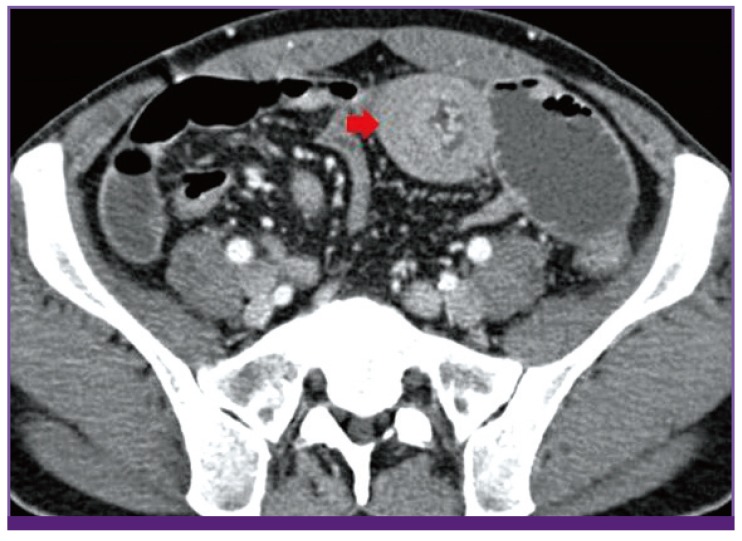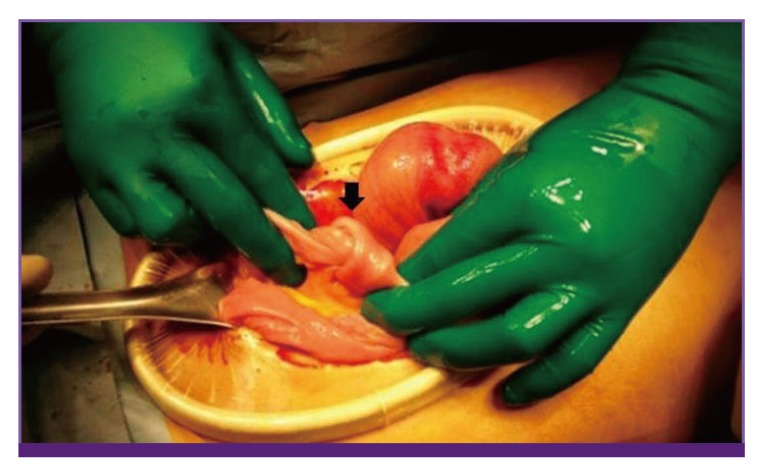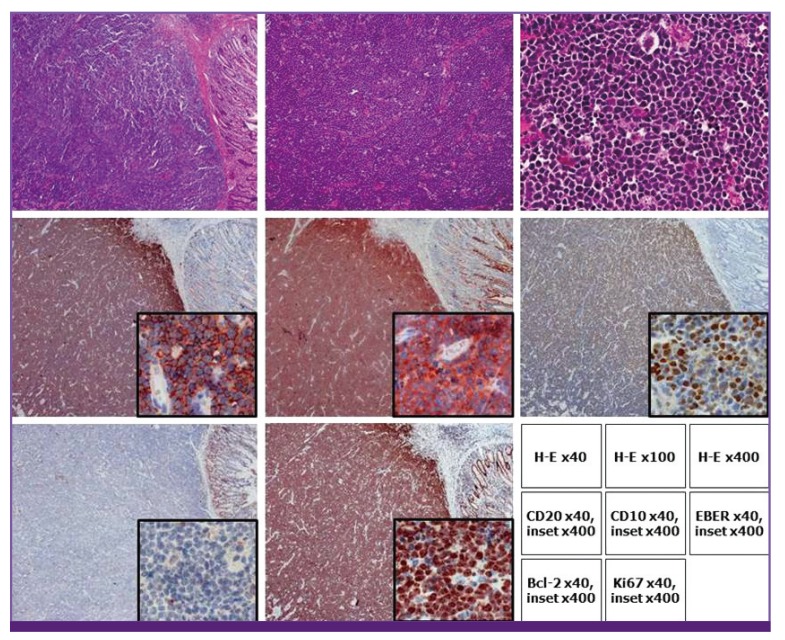1. Molyneux E, Rochford R, Griffin B, Newton R, Jackson G, Menon G, Harrison CJ, Israels T, Bailey S. Burkitt's lymphoma. Lancet. 2012; 379:1234–1244. PMID:
22333947.

2. McNally RJ, Parker L. Environmental factors and childhood acute leukemias and lymphomas. Leuk Lymphoma. 2006; 47:583–598. PMID:
16690516.

3. Yustein JT, Dang CV. Biology and treatment of Burkitt's lymphoma. Curr Opin Hematol. 2007; 14:375–381. PMID:
17534164.

4. Musallam KM, Taher AT, Shamseddine AI. Burkitt's lymphoma of the colon and bronchi: three case reports. Cases J. 2008; 1:15. PMID:
18577260.

5. Hoxha FT, Hashani SI, Krasniqi AS, Kurshumliu FI, Komoni DS, Hasimja SM, Maxhuni M. Intussusceptions as acute abdomen caused by Burkitt lymphoma: a case report. Cases J. 2009; 2:9322. PMID:
20062585.

6. Stringer MD, Pablot SM, Brereton RJ. Paediatric intussusception. Br J Surg. 1992; 79:867–876. PMID:
1422744.

7. Pollack CV Jr, Pender ES. Unusual cases of intussusception. J Emerg Med. 1991; 9:347–355. PMID:
1940239.

8. DiFiore JW. Intussusception. Semin Pediatr Surg. 1999; 8:214–220. PMID:
10573432.

9. Xu XQ, Hong T, Li BL, Liu W. Ileo-ileal intussusception caused by diffuse large B-cell lymphoma of the ileum. World J Gastroenterol. 2013; 19:8449–8452. PMID:
24363540.

10. Begos DG, Sandor A, Modlin IM. The diagnosis and management of adult intussusception. Am J Surg. 1997; 173:88–94. PMID:
9074370.

11. Takeuchi K, Tsuzuki Y, Ando T, Sekihara M, Hara T, Kori T, Kuwano H. The diagnosis and treatment of adult intussusception. J Clin Gastroenterol. 2003; 36:18–21. PMID:
12488701.

12. World Health Organization (WHO). Guidance on provider-initiated HIV testing and counselling in health facilities. Geneva: WHO;2007.
13. Besson C, Goubar A, Gabarre J, Rozenbaum W, Pialoux G, Châtelet FP, Katlama C, Charlotte F, Dupont B, Brousse N, Huerre M, Mikol J, Camparo P, Mokhtari K, Tulliez M, Salmon-Céron D, Boué F, Costagliola D, Raphaël M. Changes in AIDS-related lymphoma since the era of highly active antiretroviral therapy. Blood. 2001; 98:2339–2344. PMID:
11588028.

14. Farrier J, Dinerman C, Hoyt DB, Coimbra R. Intestinal lymphoma causing intussusception in HIV (+) patient: a rare presentation. Curr Surg. 2004; 61:386–389. PMID:
15276346.
15. Kehagias I, Karamanakos SN, Panagiotopoulos S, Giali S, Gogos CA, Kalfarentzos F. A rare case of intussusception leading to the diagnosis of acquired immune deficiency syndrome: a case report. J Med Case Reports. 2009; 3:61.

16. Yagmur Y, Gumus S. Burkitt's lymphoma causing intussusception in adults: report of two cases and review of the literature. J Gastroenterol Hepatol Res. 2015; 4:1702–1706.
17. Louie JK, Hsu LC, Osmond DH, Katz MH, Schwarcz SK. Trends in causes of death among persons with acquired immunodeficiency syndrome in the era of highly active antiretroviral therapy, San Francisco, 1994-1998. J Infect Dis. 2002; 186:1023–1027. PMID:
12232845.

18. Reisler RB, Murphy RL, Redfield RR, Parker RA. Incidence of pancreatitis in HIV-1- infected individuals enrolled in 20 adult AIDS clinical trials group studies: lessons learned. J Acquir Immune Defic Syndr. 2005; 39:159–166. PMID:
15905731.





